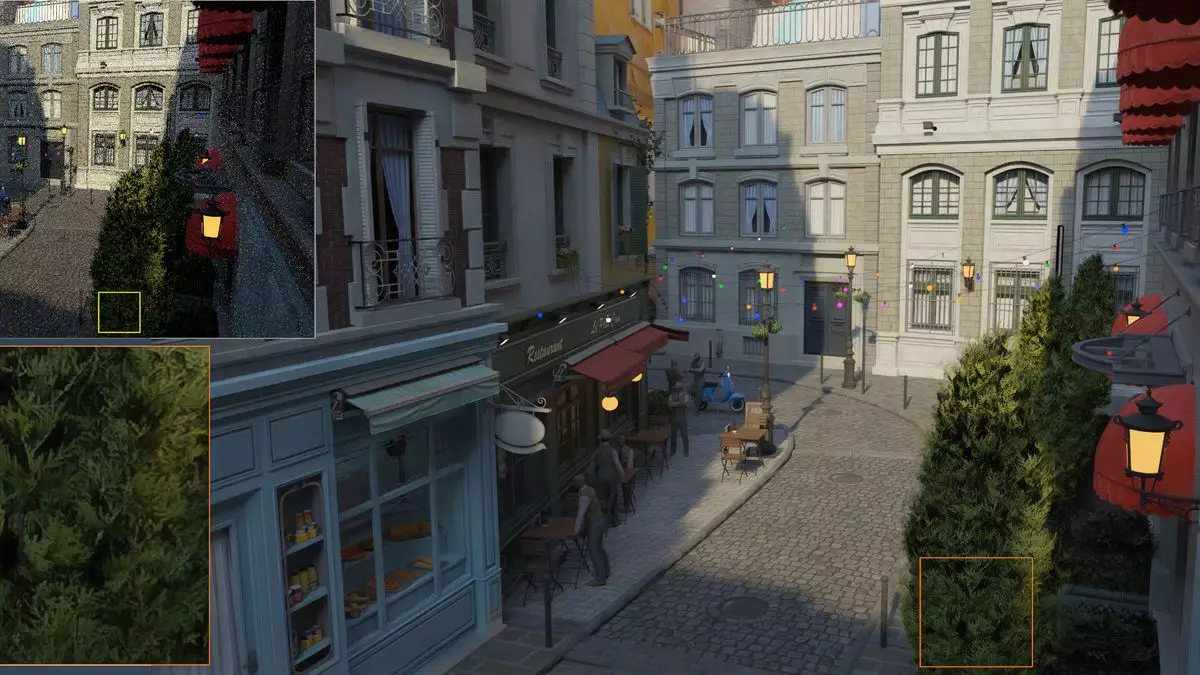As the gaming industry continues to evolve, the demand for enhanced visual fidelity grows exponentially. Graphics processing units (GPUs) play a pivotal role in this acceleration, with manufacturers like AMD seeking to innovate and bridge the gap with their competitors. Recent insights from GPUOpen suggest that AMD is preparing to introduce a neural network-based ray tracing denoising system in the upcoming generation of its FidelityFX Super Resolution (FSR), signaling a significant departure from previous iterations and a step toward closing the performance gap with Nvidia.
Ray tracing technology has taken the gaming world by storm, offering unprecedented levels of detail in lighting, shadows, and reflections. However, the computational requirements of ray tracing can overwhelm even the most powerful GPUs. As a result, real-time applications often employ a limited number of rays, leading to grainy visuals that are commonly referred to as “noise.” This noise manifests as random spots and artifacts that detract from the visual quality of a game. To counteract this issue, game developers have traditionally relied on denoising techniques that attempt to clean up the resulting images.
AMD, along with its rivals Nvidia and Intel, has recognized the urgency of improving ray tracing capabilities. Nvidia has taken the lead in this area, particularly with its Ray Reconstruction technology, which utilizes artificial intelligence to enhance ray-traced visuals. As AMD gears up to adopt similar methodologies, it is crucial to understand the implications of integrating AI-driven denoising into its next GPU architecture.
The mention of AI neural networks in AMD’s FSR advancements marks a significant shift in its approach to rendering technology. Currently, AMD’s RDNA architecture employs shader cores to perform denoising, and while this is effective, it lacks the efficiency and performance optimizations associated with dedicated AI hardware. As outlined in their recent revelations, AMD is exploring neural techniques specifically for Monte Carlo denoising, which could enable real-time path tracing on RDNA GPUs.
The implications of this are staggering. With RDNA 2, 3, and 3.5 GPUs already capable of denoising through game-specific algorithms, introducing AI could standardize and enhance the quality across a larger array of titles. The development hints at a future where gamers can enjoy cleaner images devoid of the unsightly noise that often plagues ray-traced graphics.
The Potential for Dedicated Hardware
One pressing question emerges: will future RDNA GPUs feature dedicated hardware to handle AI computations? Nvidia’s lineup boasts specific tensor cores designed for AI workloads, which greatly improve performance in ray tracing tasks. AMD, in contrast, currently relies on its shader cores, raising concerns about the efficiency of its denoising capabilities at higher resolutions like 4K.
However, the trajectory of gaming consoles suggests that AMD might indeed consider integrating specialized hardware. The anticipated PlayStation 5 Pro includes a dedicated chip for accelerating AI tasks, which parallels AMD’s emphasis on dedicated hardware benefits. Furthermore, AMD’s official goals for denoising research specifically mention “highly optimized performance for real-time path tracing at 4K resolution,” underscoring the necessity for robust architecture in upcoming RDNA generations.
The Balancing Act: Compatibility Across Platforms
While the prospect of specialized hardware is exciting, AMD must also consider its broader strategy concerning compatibility across different GPU brands. Historically, AMD has championed accessibility, allowing its software, such as FSR, to function across as many platforms as possible, including Nvidia and Intel GPUs. This approach not only expands its market presence but also lowers barriers for gamers.
As AMD looks to enhance its FSR offerings, it may adopt a tiered system akin to Intel’s XeSS, where the most cutting-edge features could be reserved for RDNA hardware while still providing a less demanding version for other GPUs. This method could help AMD maintain its position in a competitive market while also pushing its technology forward.
Looking to the Future: A Bright Path Ahead
AMD’s intentions to elevate its ray tracing capabilities using AI-driven solutions signal a promising direction for the company’s next-generation GPUs. With the competitive landscape constantly shifting, AMD’s commitment to innovation could very well position it as a formidable contender against established players like Nvidia. While the details remain in flux, advancing FSR technologies, the potential for specialized hardware, and a focus on compatibility stand to shape a new era for AMD’s graphics processing landscape.
Radeon enthusiasts can take solace in knowing that AMD is actively pursuing methods to enhance real-time graphics rendering, ushering in an exciting phase for gamers and developers alike. As the GPU landscape evolves, AMD’s progress in ray tracing promises to redefine gaming experiences for years to come.


Leave a Reply